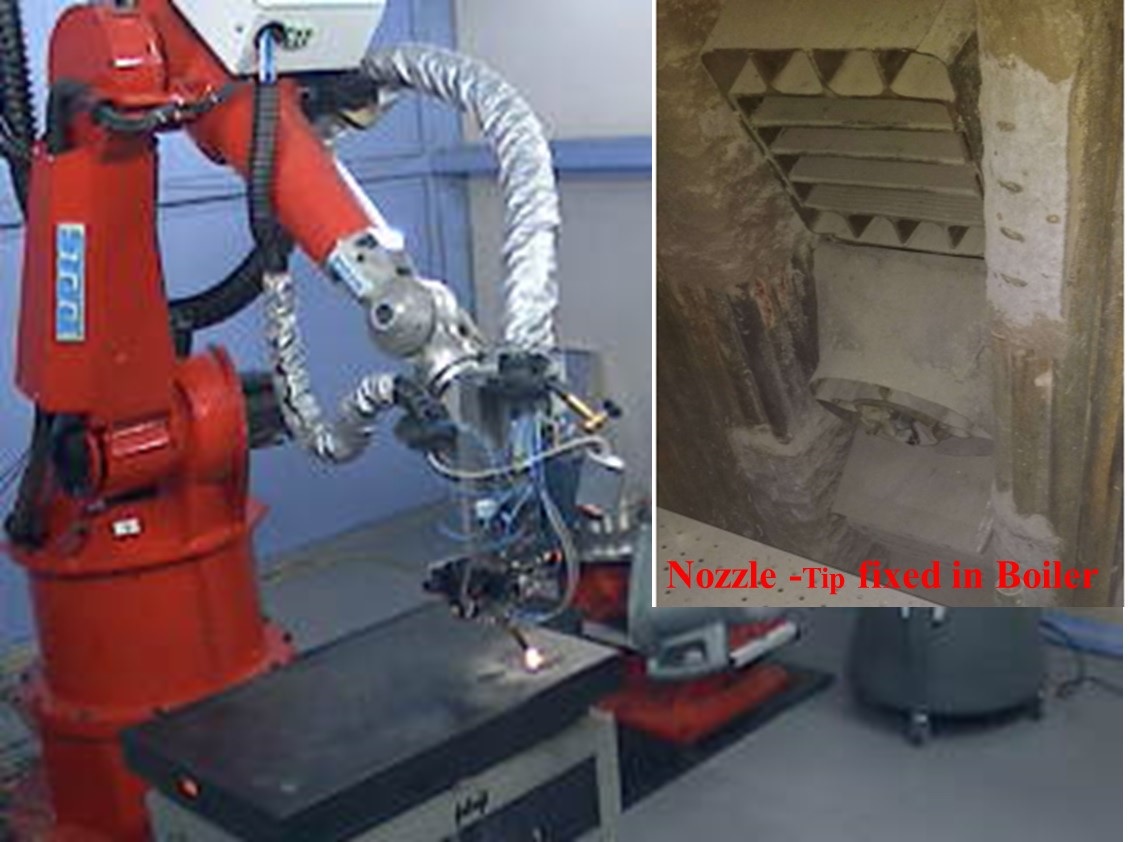Indian Scientists have developed a unique laser-based clad coating technology (LCCT) that provides improved protection to the boiler parts in thermal power plants. It can enhance life of boiler parts by 2- 3 times compared to currently use surfacing technologies. It has been found that this technology is suitable, not only for boiler parts of thermal power plants but also for any engineering application involving high temperature erosive and corrosive environment.
Laser cladding is a technique for fusing a coating material on a substrate. It allows materials to be deposited accurately, selectively, and with minimal heat input into the underlying substrate. This process allows for property improvements of the surface of a part, including better wear resistance, thus allowing for the repair of damaged or worn surfaces.
In advanced supercritical and ultra-supercritical thermal power plants, various parts of the boiler and its accessories such as feeder nozzle tip, re-heater boiler tube bends, burner spreaders often degrade due to severe wear and corrosion at high temperatures and thereby requiring frequent replacements during breakdown and maintenance schedules. Shutdown due to such problems severely affects power production in the ever-increasing demand of today's technologically advanced world. Failure of such components during the running period of the plant makes the job of breakdown maintenance challenging and cumbersome due to the prevailing high temperature and dust enveloped conditions and a massive loss in power production in coal-fired power plants.
To overcome this challenge, scientists from International Advanced Research Centre for Powder Metallurgy and New Materials (ARCI), an autonomous institute of the Department of Science & Technology, Govt. of India led by Dr. S. M. Shariff, have developed a unique laser-based clad coating technology (LCCT) that provides adequate protection to the boiler parts ensuring life span improvement beyond two years. An Indian patent has also been granted to the novel technology.
The LCCT has been developed with a meticulous fusing of a Nickel-based soft matrix with hard metallic carbide particles of (tungsten, chromium, or vanadium) on steel parts by employing a high-power laser integrated into a multi-axis robot with process monitoring and control. The control of the microstructure of the coating with manipulation of laser-heat for precise melting of hard carbide particles in the evenly distributed soft matrix under controlled dilution enabled this unique LCCT suitable for boiler parts of thermal power plant as well as engineering applications involving high temperature erosive and corrosive environment.
The patented LCCT has been successfully tested for feeder nozzle tips of boilers for 200 and 500 Megawatt of NTPC's thermal power plants at Farakka and Korba. Field results have indicated that life enhancement of LCCT had driven boiler parts by 2- 3 fold compared to currently used other surfacing technologies. ARCI is awaiting the transfer of this technology to numerous job shop entrepreneurs to make this LCCT technology very economical to cater to India's coal-based thermal power plants and those of developing countries.

Fig. 1: Laser-based clad coating deposition in progress Inset shows the laser-clad coated nozzle tip fixed in the boiler.
For more detail, please look into Indian Patent # 201811039663, or may contact Dr. S. M. Shariff (shariff[at]arci[dot]res[dot]in).






























